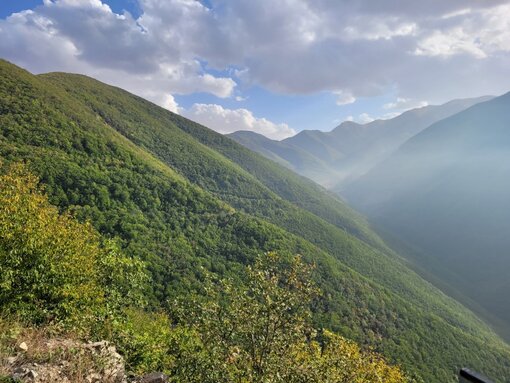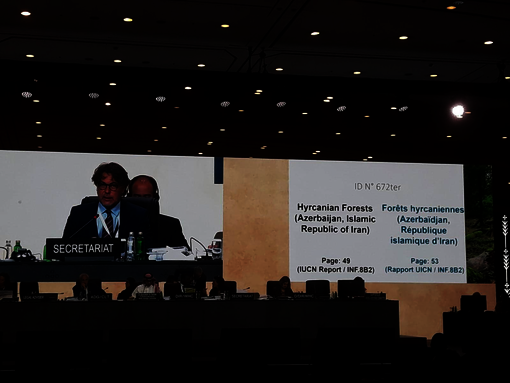With the inscription of the Cold Winter Deserts of Turan on the World Heritage List, over 3 million hectares of the largest ecosystem in Central Asia in terms of area were put under the protection of the World Heritage Convention. The serial transnational site includes 14 components in seven protected areas on the territory of Kazakhstan, Turkmenistan, and Uzbekistan.
The Cold Winter Deserts of Turan are characterized by a distinct seasonal climate with strong, long-lasting frosts in winter and extremely hot summers, in combination with very low annual precipitation. The newly inscribed property represents an outstanding example of the evolution of terrestrial ecosystems under extreme climatic conditions and the development of survival and adaptation strategies of the plants and animals occurring there.
Due to these diverse ecological and biological processes, the site hosts a very specific and diverse flora and fauna whose conservation is of global importance. For example, the deserts are habitat of globally threatened ungulates, such as the Asian Wild Ass, the Goitered Gazelle, the Saiga or the Urial. Also unique are the region's extensive saxaul forests, which are an important CO2 sink and thus play a major role in combating global climate change.
„In contrast to the hot deserts, the cold winter deserts were previously not represented on the World Heritage List. Therefore, this inscription also closes a gap. At the same time, the joint nomination of the States Parties Kazakhstan, Turkmenistan, and Uzbekistan is a good example of successful regional cooperation in the spirit of UNESCO“, explains Hannes Knapp, deputy chair of the Foundation board of the Succow Foundation.
The nomination process of the three countries was coordinated and technically supported by the Succow Foundation for many years within the framework of the Central Asian Desert Initiative (CADI).
The Hyrcanian Forests of Azerbaijan represent an extension of the 2019 inscribed World Heritage Site in Iran. This nomination was also supported by the Succow Foundation.
The Hyrcanian Forests form a unique forested massif stretching over 900 km from southern Azerbaijan along the Caspian Sea into Iran. The variety of elevations, abundant rainfall, and structural richness give these 25-50 million old-growth forests an unusually high biodiversity. Over 3,200 vascular plants were recorded, including many relicts, endangered, and regionally and locally endemic plant species. Many areas remain untouched to this day. They are refuges for many threatened mammal species, such as Persian Leopard and Wild Goat, and they are home to a variety of breeding and migratory birds.
With the extension, two components in the Hirkan National Park in Azerbaijan have been inscribed as World Natural Heritage Sites. They contribute the set of ecosystems and habitats typical of the Hyrcanian Forests as a whole. This completes a fascinating story of the uninterrupted and ongoing evolution of temperate deciduous forests over 25 million years from the Tertiary to the present, a fascinating story of continuity and survival, adaptation and diversification.
The Succow Foundation supported Azerbaijan in preparing the nomination documents. In the process, initial approaches for a future joint protection of the transboundary World Heritage Site together with Iran were also strengthened.
![[Translate to EN:] Banner Stiftung](/fileadmin/_processed_/b/c/csm_banner-stiftung_fee6c1c492.jpg)





